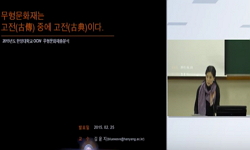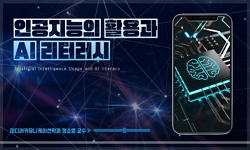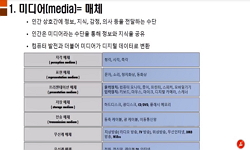Utilization of cultural heritage is gradually becoming more active, but the use of intangible cultural heritage is relatively inactive. Cultural heritage can make full use of its meaning when applied in a manner appropriate to its characteristics and ...
http://chineseinput.net/에서 pinyin(병음)방식으로 중국어를 변환할 수 있습니다.
변환된 중국어를 복사하여 사용하시면 됩니다.
- 中文 을 입력하시려면 zhongwen을 입력하시고 space를누르시면됩니다.
- 北京 을 입력하시려면 beijing을 입력하시고 space를 누르시면 됩니다.

문화관광 관점에서 무형문화재 활용과 실존적 진정성에 관한 시론적 연구: 기지시줄다리기와 한산모시짜기를 사례로 = An exploratory study on the utilization of intangible cultural heritage and existential authenticity from the viewpoint of cultural tourism : With examples of Tugging rituals and games at Gijisi village and Weaving of mosi (fine ramie) in Hansan region
한글로보기https://www.riss.kr/link?id=A106036922
-
저자
류호철 (안양대학교)
- 발행기관
- 학술지명
- 권호사항
-
발행연도
2019
-
작성언어
Korean
-
주제어
무형문화재 ; 활용 ; 행위 ; 실존적 진정성 ; 문화관광 ; Intangible cultural heritage ; Utilize (use) ; Action ; Existential authenticity ; Cultural tourism
-
등재정보
KCI등재
-
자료형태
학술저널
-
수록면
35-49(15쪽)
-
KCI 피인용횟수
0
- DOI식별코드
- 제공처
-
0
상세조회 -
0
다운로드
부가정보
다국어 초록 (Multilingual Abstract)
Furthermore, in the process of experiencing existential authenticity by directly performing the intangible cultural heritage, we can easily acknowledge the socio-cultural value and significance encompassed by our ancestors’ ideas, wisdom, knowledge, etc. in the community. In order to utilize intangible cultural heritage to reach the level of experiencing existential authenticity, several policy changes are necessary. Specifically, it can be summarized as a new direction of intangible cultural heritage utilization from simple viewing to experience, from temporary experience to long-term experience, from object to subject, from product-centered utilization to process-centered utilization, from commercialization to culture revival, etc. We are able to further enhance the value of intangible cultural heritage by seeking more active uses of intangible cultural heritage suitable for experiencing existential authenticity.
Utilization of cultural heritage is gradually becoming more active, but the use of intangible cultural heritage is relatively inactive. Cultural heritage can make full use of its meaning when applied in a manner appropriate to its characteristics and values. In this study, it was found that intangible cultural heritage such as rituals, games, and craftsmanship are the most basic characteristic in that they mainly consist of acts. Therefore, the author searched for the direction of the utilization of intangible cultural heritage by using existential authenticity, which is the theory of activity or action. The author studied the cases of Tugging rituals and games at Gijisi village and Weaving of mosi (fine ramie) in Hansan region. Through these two examples, the author examined how to use intangible cultural heritage to raise the level. In contrast to previous studies that attempted to find ways to utilize individual intangible cultural heritage, this study is characterized by several of the following. Theoretical analysis while looking for ways to use intangible cultural heritage was examined. Researchers have forbidden the concept of “authenticity” in the field of intangible cultural properties, but this author studied this concept in connection with the utilization of intangible cultural properties. Also, the author sought the direction of qualitative application that is faithful to intrinsic value of intangible cultural heritage. Existential authenticity means that a person becomes a subject and feels himself/herself (ego) by doing physical or mental acts directly, and experiences his/her existence. In this sense, intangible cultural heritage experiences are suitable for experiencing existential authenticity in that they are done through acts and mental actions. It is culturally significant that we feel the existential authenticity through intangible cultural heritage that our community members have formed and maintained together for a long period of time.
Furthermore, in the process of experiencing existential authenticity by directly performing the intangible cultural heritage, we can easily acknowledge the socio-cultural value and significance encompassed by our ancestors’ ideas, wisdom, knowledge, etc. in the community. In order to utilize intangible cultural heritage to reach the level of experiencing existential authenticity, several policy changes are necessary. Specifically, it can be summarized as a new direction of intangible cultural heritage utilization from simple viewing to experience, from temporary experience to long-term experience, from object to subject, from product-centered utilization to process-centered utilization, from commercialization to culture revival, etc. We are able to further enhance the value of intangible cultural heritage by seeking more active uses of intangible cultural heritage suitable for experiencing existential authenticity.
참고문헌 (Reference)
1 윤덕경, "한국 춤 문화유산을 적용한 공연예술 활성화 연구" 한국무용연구학회 30 (30): 263-281, 2012
2 남궁선, "전통공예기술의 현대적 활용" 한국콘텐츠학회 10 (10): 181-189, 2010
3 유효철, "전통 민요의 현장 문화 콘텐츠화 방향연구 - 양주 상여 희다지 소리를 중심으로 -" 인문콘텐츠학회 (7) : 73-104, 2006
4 고상현, "연등회를 통한 궁궐 문화유산콘텐츠의 창의적 활용 방안 연구" 동아시아불교문화학회 (20) : 512-541, 2014
5 조효상, "세계유산협약의 기초개념 연구 : 탁월한 보편적 가치, 진정성, 완전성에 관하여" 한남대학교 대학원 2013
6 남윤희, "세계유산 관광지 진정성 측정에 관한 연구 - 안동 하회마을 관광객을 대상으로 -" 한국관광학회 40 (40): 205-223, 2016
7 김근혜, "밀양백중놀이의 현대적 의의와 문화콘텐츠적 활용방안" 한국민속학회 62 : 301-330, 2015
8 "문화재보호법"
9 류호철, "문화재 활용의 개념 확장과 활용 유형 분류체계 구축" 국립문화재연구소 47 (47): 4-17, 2014
10 류호철, "무형문화재로서 전통술[傳統酒]의 가치와 보전·활용 방향" 동아시아고대학회 (44) : 95-121, 2016
1 윤덕경, "한국 춤 문화유산을 적용한 공연예술 활성화 연구" 한국무용연구학회 30 (30): 263-281, 2012
2 남궁선, "전통공예기술의 현대적 활용" 한국콘텐츠학회 10 (10): 181-189, 2010
3 유효철, "전통 민요의 현장 문화 콘텐츠화 방향연구 - 양주 상여 희다지 소리를 중심으로 -" 인문콘텐츠학회 (7) : 73-104, 2006
4 고상현, "연등회를 통한 궁궐 문화유산콘텐츠의 창의적 활용 방안 연구" 동아시아불교문화학회 (20) : 512-541, 2014
5 조효상, "세계유산협약의 기초개념 연구 : 탁월한 보편적 가치, 진정성, 완전성에 관하여" 한남대학교 대학원 2013
6 남윤희, "세계유산 관광지 진정성 측정에 관한 연구 - 안동 하회마을 관광객을 대상으로 -" 한국관광학회 40 (40): 205-223, 2016
7 김근혜, "밀양백중놀이의 현대적 의의와 문화콘텐츠적 활용방안" 한국민속학회 62 : 301-330, 2015
8 "문화재보호법"
9 류호철, "문화재 활용의 개념 확장과 활용 유형 분류체계 구축" 국립문화재연구소 47 (47): 4-17, 2014
10 류호철, "무형문화재로서 전통술[傳統酒]의 가치와 보전·활용 방향" 동아시아고대학회 (44) : 95-121, 2016
11 류호철, "무형문화재 보전 수단으로서 등록무형문화재 제도 도입 필요성과 그 의미" 한국민속학회 64 : 125-152, 2016
12 "무형문화재 보전 및 진흥에 관한 법률"
13 김정준, "무형문화유산을 활용한 축제 콘텐츠개발 연구 - 강릉지역을 중심으로" 65-81, 2011
14 정병흠, "무형문화유산을 활용한 미술교육 효용 연구*한국적 행위예술 요소를 중심으로" 한국미술교육학회 26 (26): 1-28, 2012
15 최종호, "무형문화유산을 활용한 관광자원화 방향" 7 : 11-40, 2010
16 김미숙, "무형문화유산 영상아카이브 활용을 위한 수용자 반응 연구" 한국콘텐츠학회 12 (12): 114-122, 2012
17 "무형문화유산 보호 협약(Convention for the Safeguarding of the Intangible Cultural Heritage)"
18 최형섭, "먀오족의 국가급 무형문화유산과 활용 실태" 한국중국소설학회 (46) : 391-426, 2015
19 조정현, "마을공동체 제의 관련 유무형 공유자원의 활용방안" 도서문화연구원 (49) : 147-171, 2017
20 이미경, "단절 위기 민속놀이의 전승 및 관광자원화 방안" 대한관광경영학회 29 (29): 119-137, 2014
21 한희정, "국내 무형문화유산 디지털 아카이브 구축 및 활용을 위한 연구" 한국비블리아학회 27 (27): 95-134, 2016
22 Wang, N., "관광과 근대성: 사회학적 분석" 일신사 2004
23 변찬복, "관광객 경험의 진정성과 일상성에 관한 연구" 인문과학연구소 29 : 139-164, 2012
24 민경선, "과학기술을 융합한 무형문화유산의 활용방안에 대한 다학제적 연구" 한국전시산업융합연구원 28 : 61-74, 2017
25 강민희, "경산자인단오제의 스토리텔링 방안 모색 —‘한 장군’ 과 ‘ 여원무’ 를 중심으로" 한국문예창작학회 15 (15): 269-295, 2016
26 조해진, "강릉단오제 문화콘텐츠 개발 방안 고찰" 8 : 97-126, 2014
27 Wang, N., "Rethinking authenticity in tourism experience" 26 (26): 349-370, 1999
28 문화재청, "2017년 ‘생생문화재 사업’ 120선과 ‘향교, 서원문화재 활용사업’ 87선 확정(보도자료)"
29 문화재청, "2012년 문화유산 향유 및 관리 실태조사 결과보고서" 2012
동일학술지(권/호) 다른 논문
-
지역문화재 활용에 대한 이해관계자의 인식 연구: 문화재야행을 중심으로
- 한국관광연구학회
- 김재학
- 2019
- KCI등재
-
영화 <카사노바>(Casanova)에 재현된 카니발의 자유와 연대성 고찰
- 한국관광연구학회
- 강준수
- 2019
- KCI등재
-
청소년의 가족여가활동이 가족관계 및 학교생활적응에 미치는 영향
- 한국관광연구학회
- 송진숙
- 2019
- KCI등재
-
- 한국관광연구학회
- 신동주
- 2019
- KCI등재
분석정보
인용정보 인용지수 설명보기
학술지 이력
| 연월일 | 이력구분 | 이력상세 | 등재구분 |
|---|---|---|---|
| 2026 | 평가예정 | 재인증평가 신청대상 (재인증) | |
| 2020-01-01 | 평가 | 등재학술지 유지 (재인증) |  |
| 2017-01-01 | 평가 | 등재학술지 유지 (계속평가) |  |
| 2014-01-28 | 학술지명변경 | 외국어명 : Korea Journal of Tourism and Hospitality Research -> International Journal of Tourism and Hospitality Research |  |
| 2013-01-01 | 평가 | 등재학술지 유지 (등재유지) |  |
| 2010-01-01 | 평가 | 등재학술지 선정 (등재후보2차) |  |
| 2009-01-01 | 평가 | 등재후보 1차 PASS (등재후보1차) |  |
| 2008-01-01 | 평가 | 신청제한 (등재후보1차) |  |
| 2007-12-25 | 학술지명변경 | 외국어명 : 미등록 -> Korea Journal of Tourism and Hospitality Research |  |
| 2007-01-01 | 평가 | 등재후보학술지 유지 (등재후보2차) |  |
| 2006-03-29 | 학술지등록 | 한글명 : 관광연구저널외국어명 : 미등록 |  |
| 2006-01-01 | 평가 | 등재후보 1차 PASS (등재후보1차) |  |
| 2004-01-01 | 평가 | 등재후보학술지 선정 (신규평가) |  |
학술지 인용정보
| 기준연도 | WOS-KCI 통합IF(2년) | KCIF(2년) | KCIF(3년) |
|---|---|---|---|
| 2016 | 1.95 | 1.95 | 1.84 |
| KCIF(4년) | KCIF(5년) | 중심성지수(3년) | 즉시성지수 |
| 1.82 | 1.8 | 2.18 | 0.68 |




 DBpia
DBpia






